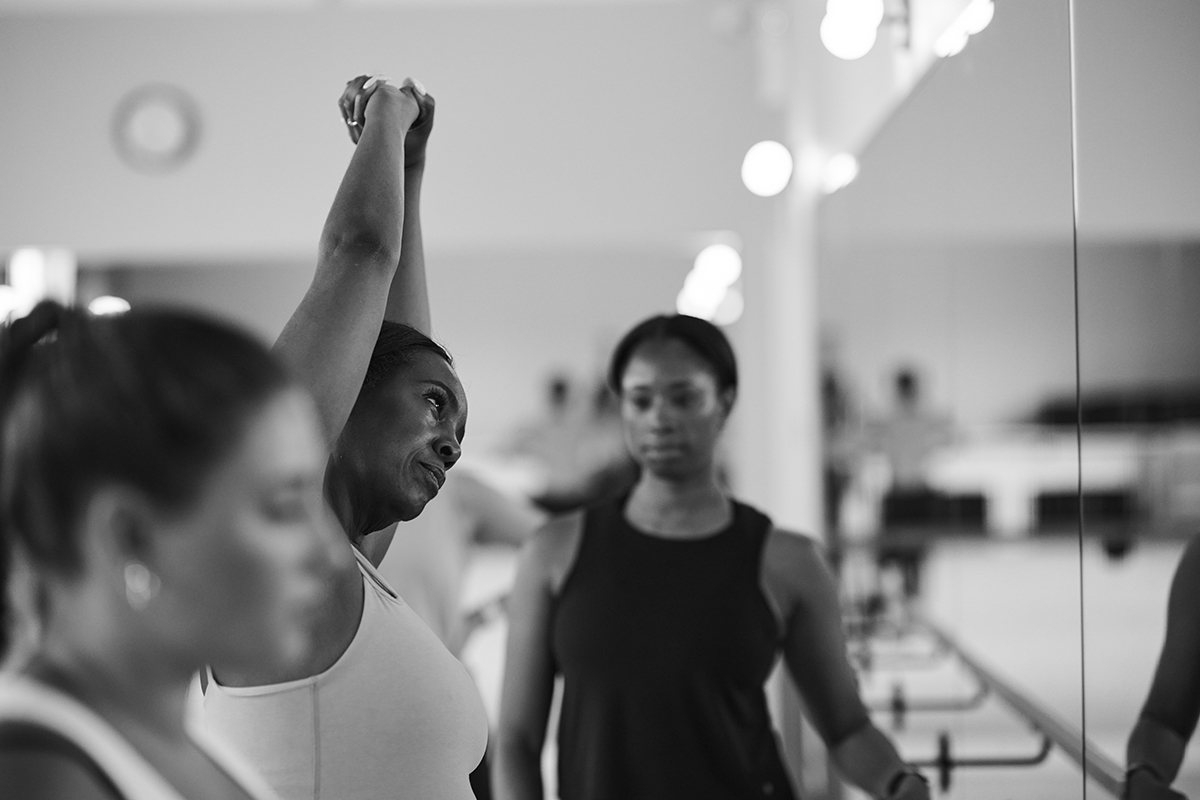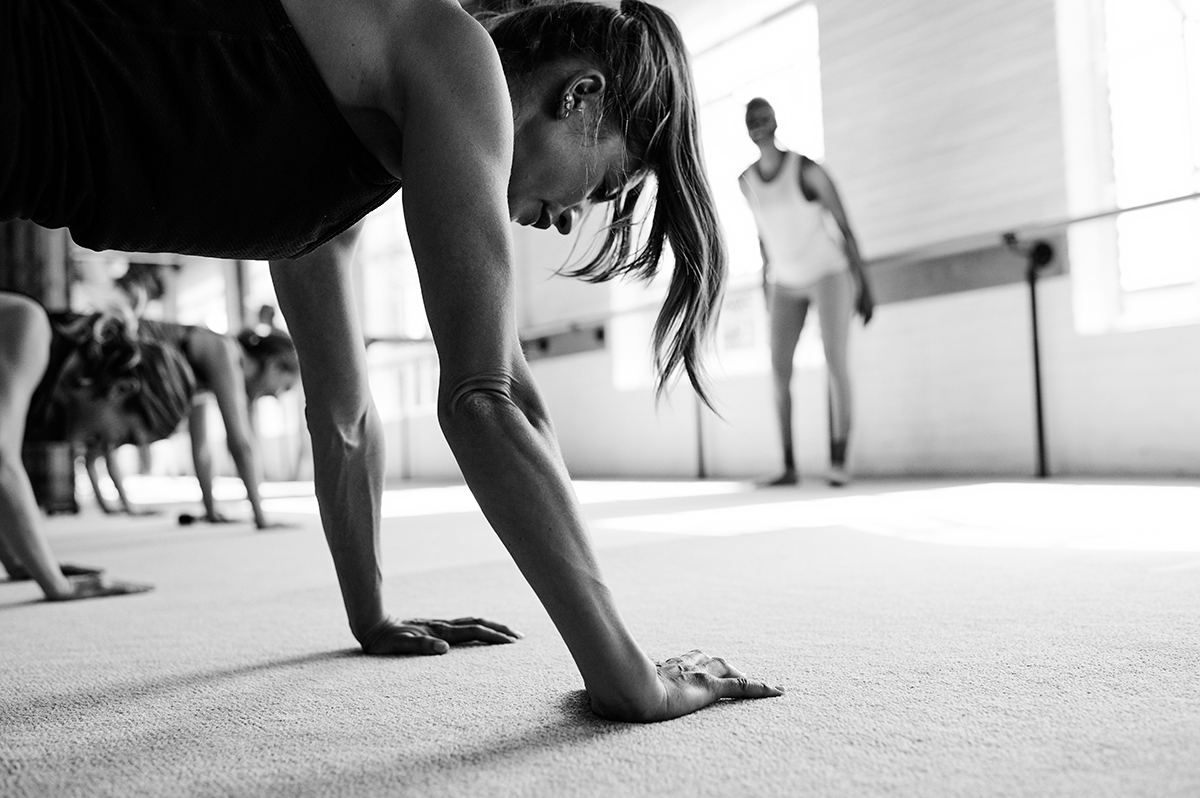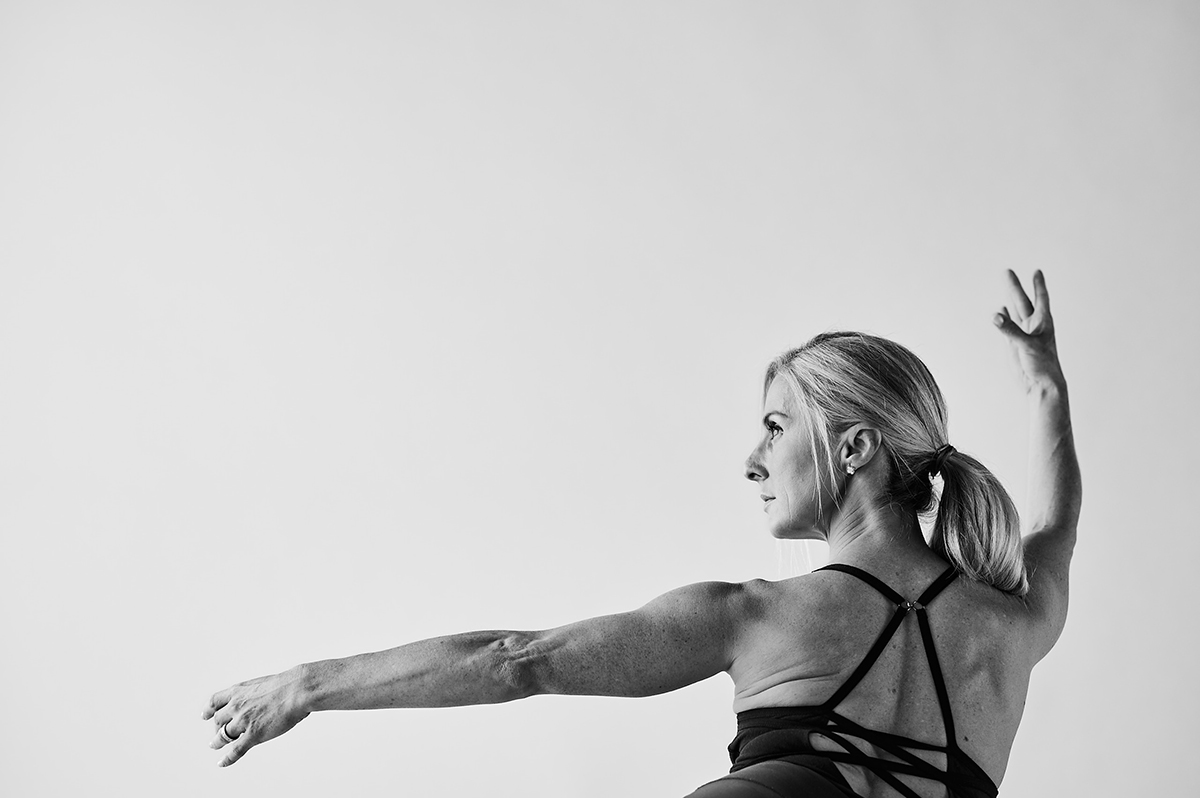New clients! For a limited time, Get 13 Classes for $78 (only $6 per class)
The Best Barre Core Exercises to Tone Your Stomach
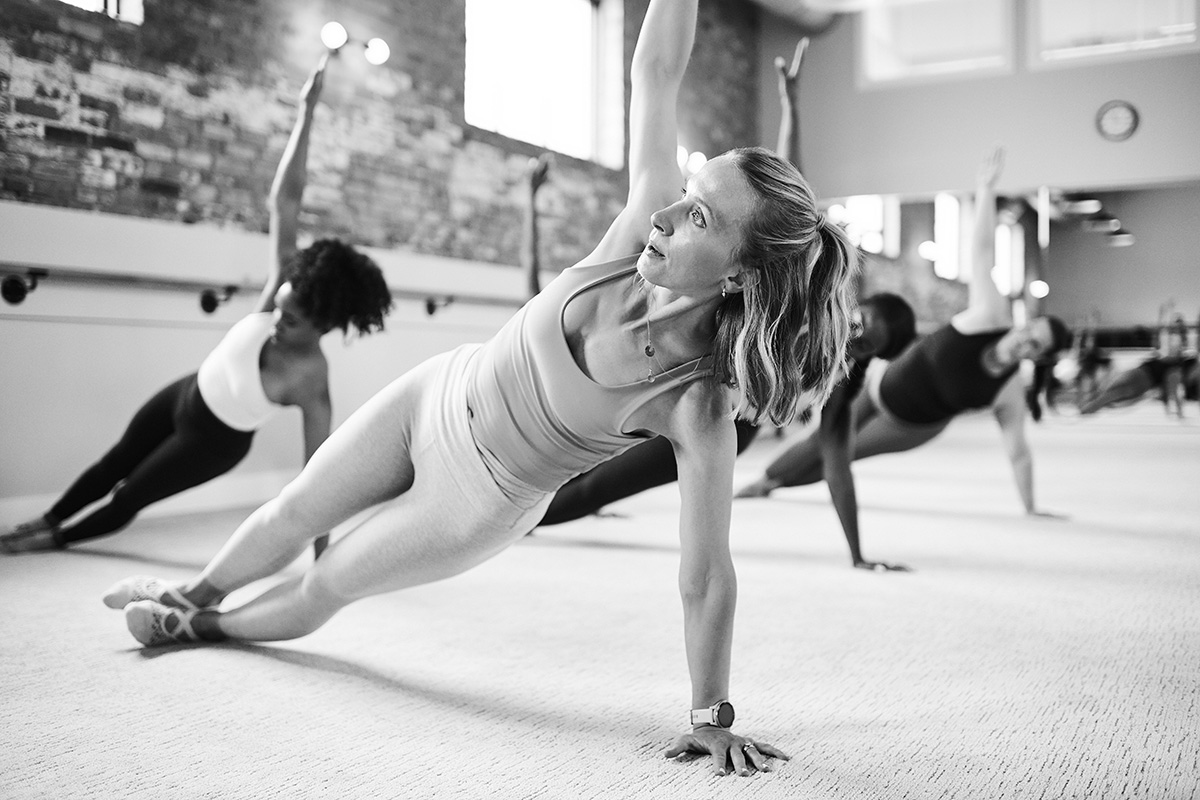
Whether you want to build core strength, define your waistline, or rebuild abdominal muscles postpartum, you can do it all with barre core workouts. We’ll explore nine of our favorite barre core exercises to sculpt and tone your stomach — and walk you through each step so you’re ready for an in-studio barre ab workout.
We’ll also cover the different muscle groups to target in ab workouts, the benefits of a strong core, and how to tone your stomach with barre. Keep reading to take your ab workout routine to the next level.
What muscles make up the core?
It’s important to understand the basic anatomy of your abdominals before trying a barre core workout, as they all target different parts of your core. The following muscle groups primarily contribute to having a strong core: the transversus abdominis, rectus abdominis, and both the internal and external obliques.
- Transversus Abdominis: The transversus abdominis (TA) is the deepest muscle in the abdominal wall, wrapping around your internal organs and stabilizing your spine. While this large muscle is hidden behind the rectus abdominis, it plays a critical role in your abdominal strength and contracts every time you move your arms and legs. Because it’s attached to the diaphragm, you have to breathe to engage it.
- Rectus Abdominis: Better known as the six-pack, the rectus abdominis lies front and center on your midsection. It is actually composed of eight muscle sections and is superficial enough to be seen with low levels of body fat. This muscle group helps with your posture and lumbar spine movement.
- Internal and External Obliques: Your obliques are found on the sides of the abdomen with the external obliques on top of the internal obliques. These muscles help with bending, twists and trunk rotation, and they also play a role in the respiration process.
How barre core exercises helps build strength
The Bar Method is the perfect way to start building your core strength thanks to targeted moves and personalized modifications in every workout.
A master instructor for The Bar Method explains, “The Bar Method is so effective when it comes to targeting ab muscles because you have opportunities to engage this muscle group in nearly every exercise that we do. You’re asked to focus on your breathing throughout each class, which is a great reminder from start to finish to be mindful of your abdominals.”
By emphasizing proper form and core engagement throughout workouts, you’re activating your abdominals in nearly every exercise.
Another reason barre is one of the best ab workouts, particularly for women: “We focus a lot on the core as a whole (abs, glutes, and posture), and most of our exercises will cue you to draw your abdominals in to activate your core, meaning more work for your abs,” the instructor adds. “This work can help to stabilize your body during some of our seat exercises, keeping you in better alignment during thigh movements and keeping the work in the primary muscle group.”
Our master instructor has seen firsthand how The Bar Method’s unique approach to ab work has positively affected her students’ health and wellness. “I really love the way our abdominal-focused exercises have been designed. So many clients will say that they finally feel like they’re getting an ab workout after years of searching for the exercises to strengthen this area. By utilizing mats and props for specific exercises to help work with the proportions of your body, we can help you to stay out of your hip flexors and back — two areas that can easily take over during traditional abdominal exercises. With the use of the right props and proper form, you’re better able to isolate the various muscles in your abdominals and maximize your results.”
5 Bar Method Ab Exercises for a Strong Core and Sculpted Stomach
Ready to try a barre ab workout for yourself? Here are five of our favorite barre core exercises you can expect to practice in our studios and even try at home.
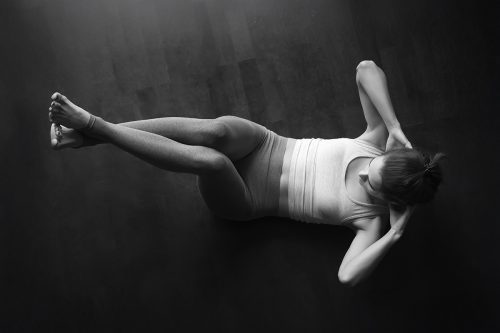
1. Clam
Clam uses both the curl in and the uncurl out to strengthen and lengthen your abdominals. That’s part of what makes it so challenging!
How to:
- Lie flat on your back and cross your right knee over the other. Draw your knees over your hips and let your feet dangle.
- Cross your hands over your chest and place them on opposite shoulders. If you need more neck support, place your left (opposite) hand behind your head.
- Use your abdominals to curl your upper and lower halves toward each other. Curl in for 2 counts, and out for 2 counts. Your legs will move in a much smaller range than your upper body.
- you may also hold at the top of your range for smaller curls at different, controlled tempos.
- Be sure to change the cross of your legs and repeat on the other side.
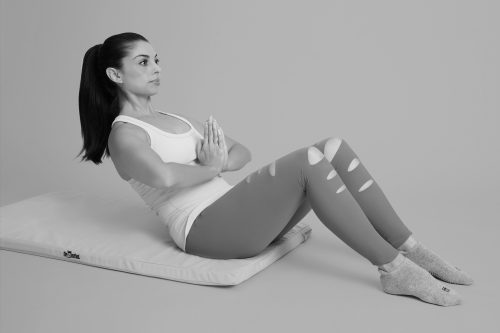
2. High Curl
This position focuses on strengthening your deepest layer of abdominal muscles, which are connected to your diaphragm — remember to breathe!
How to:
1. Sit on the floor and place your feet flat with your knees bent and your legs hips’ width apart.
2. Grip your glutes and reach your arms overhead. Exhale and slowly roll your torso backwards until you feel your abs engage (about 45 degrees). Allow your arms to lower on a forward diagonal for balance and keep your glutes squeezed. Bend forward at your waist.
3. Stay still and exhale slowly for up to 10 counts.
4. Hold onto your thighs to reset.
5. Let go and repeat the release set up to 4 more times.
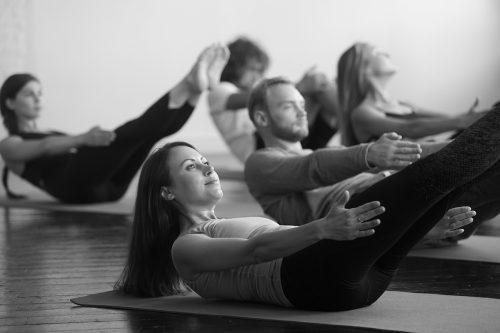
3. Heel Taps
This exercise strengthens your lower abdominals and comes with an array of challenge options.
How to:
- Lie down and place a small mat underneath your glutes to create a pelvic tilt.
- Raise both legs over your hips, bend your knees at a 90-degree angle, and keep them hip-width apart.
- Press your hands or fists down into the floor and keep your lower back firmly pressed down.
- Slowly lower one heel forward toward the floor and use your abs to draw your leg back up. Don’t worry about tapping your foot to the floor (most of us won’t move that much). Instead, focus on control and keeping your pelvic tilt.
- Alternate your legs at a slow tempo.
- You may keep your head down the whole time, or for more challenge for your six-pack muscles, place your hands behind your head and add a small curl forward as each leg comes back in.
4. Kickstand Curl
This exercise uses the floor as leverage to isometrically engage your six-pack abdominal muscles. You can perform the entire exercise with your elbows down, or work your way up to the challenge options.
How to:
- Lie on your back with your knees bent and prop yourself up on your elbows.
- Squeeze your glutes and press your lower back toward the floor.
- With your elbows aligned under your shoulders, curl forward as though you are trying to touch your ribs to your hips. Keep your gaze forward and your neck relaxed.
- Use your elbows as leverage to perform small curls forward from this point at different tempos.
- For more challenge, try raising your arms to 90 degrees at shoulder height as you curl 10 to 20 times before resetting.
- Do this for up to 5 minutes total.
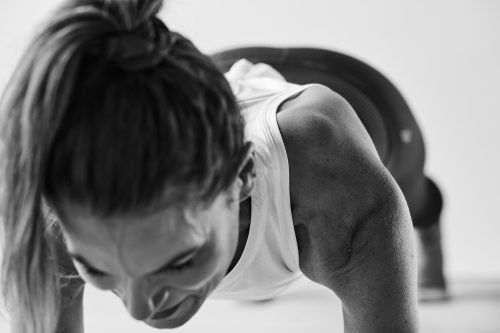
5. Plank
This full body exercise is a terrific addition to your ab workout. It relies on your deep ab muscles to draw your center in tight while improving your overall core strength.
How to:
- Come onto your forearms with your elbows beneath your shoulders. Either clasp your hands together or face your palms toward one another.
- Draw your legs hip-width apart and come to the balls of your feet with straight legs. You may also perform plank on your knees if needed to hold better alignment as you build endurance.
- Lift your hips up in line with your ribs and squeeze your seat.
- Hold for up to 90 seconds and mark the counts with empathic exhales to engage your abs.
5 More Barre Ab Exercises to Try at Home
While these aren’t moves you can expect to experience in our studios, they are all effective at helping build a strong core and sculpted stomach.
1. Scissors
Scissors or scissor kicks are a fabulous ab exercise to target the low abs, but you also get the added benefit of working your quads and lower body at the same time. Pay extra attention to engaging your core during this move and you’ll be sure to feel the burn — and see results.
How to:
- Lie flat on your back with your knees bent and feet flat on the floor. Place your palms down at your sides.
- Engage your core by pressing your lower back into the ground and pulling your belly button inward.
- Lift both legs off the ground until your shins are parallel to the floor, forming a 90-degree angle at your knees. Keep your toes pointed.
- Slowly lower one leg down toward the ground, keeping it straight. As you lower one leg, begin to lift the other leg up, keeping it straight. Imagine opening and closing scissors with your legs.
- Continue by alternating legs in a controlled and slow manner. Don’t let your lower back arch off the mat.
2. Standing Oblique Crunch
Strengthening your obliques not only helps you achieve a flat, toned stomach, but can improve your balance and coordination, too. Try standing oblique crunches for a quick ab exercise you can do anytime.
How to:
- Stand with your feet shoulder-width apart and knees slightly bent. Engage your core by pulling your belly button in toward your spine.
- Place one hand behind your head, with your elbow pointing out to the side.
- Bend your torso down toward your hip on the opposite side of the hand behind your head. Imagine trying to touch your elbow to your hip.
- Only your torso should be moving, not your hips or legs. Squeeze your obliques at the bottom of the movement.
to having strong abs: the transversus abdominis, rectus abdominis, and both the internal and external obliques.
- Transversus Abdominis: The transversus abdominis (TA) is the deepest muscle in the abdominal wall, wrapping around your internal organs and stabilizing your spine. While this large muscle is hidden behind the rectus abdominis, it plays a critical role in your abdominal strength and is contracted every time you move your arms and legs. Because it’s attached to the diaphragm, you actually have to breathe to engage it!
- Rectus Abdominis: Better known as the six-pack, the rectus abdominis lies front and center on your midsection. It’s actually comprised of eight muscle sections and is superficial enough to be seen with low levels of body fat. This muscle group helps with your posture and lumbar spine movement.
- Internal and External Obliques: Finally, your obliques are found on the sides of the abdomen with the external obliques on top of the internal obliques. These muscles help with bending, twists and trunk rotation, and they also play a role in the respiration process.
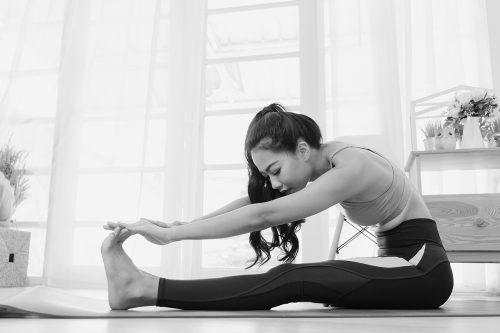
3. Pilates Roll-Up
This pilates-inspired move may look like it’s for beginners, but make no mistake — it’s a sneaky one that will quickly strengthen your abs (and have you breaking a sweat). Keep your core muscles engaged throughout this movement by pulling your belly button inward. Aim for a gentle C-curve in your spine throughout the movement, and avoid arching your lower back or straining your neck.
How to:
- Lie on your back and inhale as you bring your arms over your head.
- As you exhale, draw your arms up as you slowly lift up, curling your spine one vertebrae at a time off the mat.
- Once your hands are parallel to your feet, inhale slowly as you start rolling back down, one vertebrae at a time, until you are lying flat on your back again.
4. Hip Lifts
Hip lifts are another magic multitasking move; not only do they sculpt and tone your hips and glutes, but they’re an amazing exercise to strengthen your core.
- Lie flat on your back and draw your legs up to a tabletop position. You can keep a playground ball between your thighs.
- Hold your shins parallel to the floor.
- Pulse your legs toward each other and squeeze the ball twice.
- Use your abs to raise your hips up and slowly lower them back down.
- Raise your legs while bending your knees so your calves form a tabletop position. Keep your arms at your sides.
5. Genie Abs
Try to maintain the slight C-curve in your lower back throughout the exercise.
How to:
- Sit on the floor with your feet flat on the ground, hip-width apart.
- Bring your arms into genie position by resting your forearms on top of your thighs, with your fingers on top of your elbows.
- Get into a C-curve position, with your belly button pulled in toward your spine to engage your core.
- Keeping your elbows in line with your shoulders, lift your upper torso slightly off the ground.
- Simultaneously raise one knee up toward your chest, keeping the foot flat on the floor.
- Twist your torso slightly towards the raised knee, aiming to bring your elbow (the one on the same side as the raised knee) to touch that knee.
How to engage your core
Part of what makes barre such an effective way to tone your abs is that it requires you to engage your core for so much of the workout. But how can you tell if you’re properly engaging your core? Here are a few pointers to ensure you see the best results:
- Think stability, not squeezing. Don’t clench your abs like a fist; instead imagine you’re zipping up tight pants that pull your belly button gently back toward your spine. This creates a slight inward curve in your lower back (neutral spine) that you want to maintain.
- Think “bracing.” Picture yourself bracing for a punch in the gut. This activates your deeper core muscles that provide support and protect your spine.
- Breathe and engage. Trying to engage your core shouldn’t leave you breathless! Remember to keep breathing throughout your barre exercises, even as you activate your abdominals.
Benefits of engaging your core
Barre can be a great way to remind you to activate your core, and it’s something you can do throughout your daily life, not just in class. Engaging your core isn’t just helpful in achieving a flat stomach; it can have many benefits for your overall health. These include:
- Better balance and stability. Your core muscles act as natural stabilizers, which help steady you as you walk, sit, and stand. A stronger core can improve your balance and stability.
- Improved posture. Weak core muscles can make you more prone to slouching; while a stronger core can help you sit up straighter, leading to a healthier spine.
- Reduced back pain. Whenever you engage your ab muscles, the pressure within your abdominal cavity increases. This motion actually takes weight and pressure off of your spine, which can reduce back pain.
How long does it take to get noticeably more toned abs?
Strengthening your core takes time, and every body is different when it comes to abdominal toning, tightening, and definition — regardless of how hard and often you’re working out. So, when it comes to the time it takes to get more defined abs, the simple answer is that it varies.
Some women struggle to reconnect with their abs after childbirth, and the presence of intramuscular abdominal fat coupled with the naturally thin build of the abdominal muscles can make the journey to flat abs seem even longer. But sticking with an abdominal workout routine will no doubt pay off with the results you’re working so hard to achieve.
While there’s no magic timeframe for seeing defined abs, it’s not uncommon to see results within a few months of regular barre classes. Each Bar Method class engages your abs further with deep breathing and abdominal work, helping you connect to your core and strengthen this important muscle group. In the meantime, our classes gradually build dense muscle and burn fat to help reveal all your hard work. In other words, stay committed to the program! When it comes to defined and toned abs, persistence is key.
At The Bar Method, our program offers a wide variety of ab workouts for women to help you chisel your midsection and strengthen your core. Find a Bar Method studio near you to get started, or sign up for online classes here.

